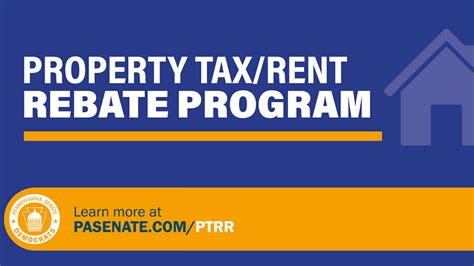Maximizing Benefits: A Deep Dive into the Property Tax and Rent Rebate Program
The Property Tax and Rent Rebate Program (PTRR) offers significant financial relief to eligible residents. Designed primarily for senior citizens, widows, widowers, and people with disabilities, this program aims to alleviate the financial burdens associated with property taxpayers and renters in specific income brackets. Understanding the details of the program helps individuals maximize their benefits and navigate the application process effectively.
Who is Eligible?
Eligibility for the PTRR program generally depends on a few critical factors, including:
- Age: Applicants must be at least 65 years old, or 50 years of age for widows or widowers, and over 18 for people with disabilities.
- Income: There are set income limits, which may vary yearly. For 2023, for example, the allowable income may be set at $35,000 for homeowners and $15,000 for renters, excluding some specified income sources.
- Residency: Applicants must be residents of the state and have resided there for a minimum period.
Types of Benefits
The program can provide a notable rebate based on property taxes paid or rental payments made. Here’s a closer look at the benefits:
- Property Tax Rebate: Homeowners can receive a rebate based on their eligible property taxes. The amount can range from a few hundred to several thousand dollars, depending on the amount paid and eligibility factors.
- Rent Rebate: Renters can also claim a rebate based on their annual rent payments. This rebate usually caps at $650 but can offer significant relief in terms of affordability.
How to Apply
The application process for the Property Tax and Rent Rebate Program can be straightforward if you have all the necessary documents ready. Here’s a step-by-step guide:
- Gather Information: Collect required financial documents, including income statements and evidence of property taxes or rent payments.
- Complete the Application Form: The form can be obtained online through the state’s revenue department or in person at designated locations.
- Submit Your Application: Applications can typically be submitted online, by mail, or delivered in person. Be wary of deadlines, as applications are usually due by June 30 of the year following the tax year.
- Await Processing: After submission, stay tuned for any communication from the assessing department. If need be, follow up to ensure your application is processed adequately.
Tips to Maximize Your Benefits
To maximize the benefits derived from the Property Tax and Rent Rebate Program, consider the following tips:
- Stay Informed: Keep up to date with the latest changes in income limits and eligibility criteria. Programs may undergo annual revisions.
- Seek Assistance: Reach out to local agencies or organizations that assist with filing applications. They can offer guidance tailored to your circumstances.
- File Early: Submit your application as early as possible. This approach ensures you receive your rebate in a timely manner and allows you to address any potential issues quickly.
- Check for Additional Programs: In some states, additional local programs can supplement the PTRR program. Investigating these options can provide even greater financial relief.
Common Misconceptions
Many prospective applicants harbor misconceptions regarding the PTRR program, which can inhibit their participation. Here are three common myths:
- Myth 1: “I cannot apply if my income exceeds the limit slightly.” – Many programs allow for certain extenuating circumstances to be taken into account. Check your eligibility despite minor income fluctuations.
- Myth 2: “The application is too complicated.” – While forms may require specific details, local agencies often have resources to help you through the process.
- Myth 3: “Receiving benefits will affect my social security or other benefits negatively.” – Most property tax and rent rebates do not impact other government assistance programs.
Conclusion
The Property Tax and Rent Rebate Program provides essential financial assistance to eligible individuals, recognizing the challenges faced by seniors, widows/widowers, and people with disabilities. By understanding the eligibility criteria, application process, and effective filing techniques, beneficiaries can gain significant financial relief. Awareness and proactive engagement become central to maximizing the benefits of this program.
FAQs
1. What reasons could disqualify me from the program?
If your income exceeds the stated limits, or if you fail to meet residency requirements, you would not be eligible for the program.
2. How often can I apply for the rebate?
Eligible individuals can apply annually for rebates based on the previous year’s property taxes or rent payments.
3. What documentation do I need to submit with my application?
You will generally need proof of income, proof of property ownership or rental agreements, and payment documents showing taxes or rent paid during the year.
4. How long does it take to process my application?
The processing time may vary, but it typically takes a few weeks to a couple of months, depending on the volume of applications submitted.
5. Are there other programs available similar to PTRR?
Yes, many states and local governments have additional programs designed to assist low-income individuals with housing costs or property taxes. It’s advisable to explore these local options.
Download Property Tax And Rent Rebate Program
